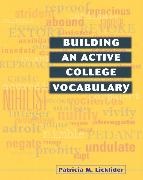Read more
List of contents
UNIT 1: WHAT SURROUNDS A NEW WORD?
1. Definitions and Restatements, Examples, Demonstratives: Obvious Clues to Meaning.
2. Repetition, Lists, Repeated Word Patterns: Less Obvious Clues I.
3. Contrast, Descriptive Words: Less Obvious Clues II.
UNIT 2: WHAT IS INSIDE A NEW WORD?
4. Roots.
5. Using Roots Carefully.
6. Greek and Latin Roots with Fixed Meanings.
7. Prefixes with Fixed Meaning.
8. Suffixes with Fixed Meanings.
UNIT 3: WHAT HELP IS A DICTIONARY?
9. Survey Your Dictionary.
10. The 60-Second Memory Aid.
11. Using a Word's Pronunciation.
12. Using a Word's History.
13. Using a Word's Cognates.
UNIT 4: PLAYING WITH WORD PARTS.
14. Common Latin Roots.
15. Common Prefixes.
16. Common Suffixes.
17. Playing with Suffixes.
18. More Play with Word Families.
UNIT 5: IMPROVING YOUR WRITING VOCABULARY.
19. Using New Words.
20. Varying Nouns and Adjectives.
21. Varying Verbs.
22. Using Modifiers.
23. Varying Parts of Speech.
24. Using Words Figuratively.
UNIT 6: WHAT HELP IS A THESAURUS?
25. The Limits of a Thesaurus.
26. Making the Thesaurus Work for You.
Unit 7: Appendix: Additional Word Families.
Glossaries.
Answer Key.
Index.
Summary
Building an Active College Vocabulary helps students develop their reading and writing vocabularies by showing new words in memorable contexts.

